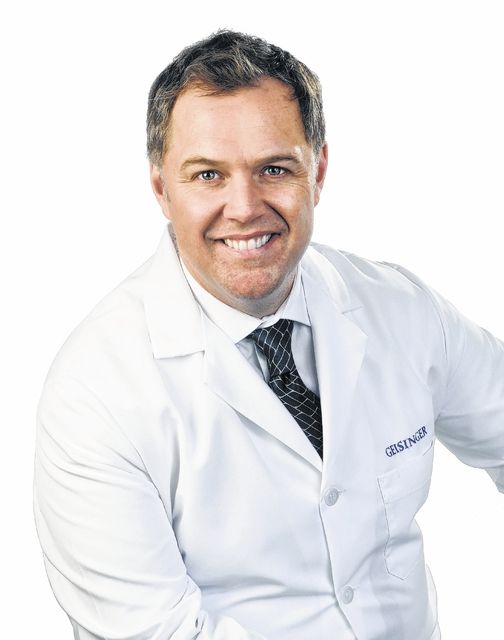Click here to subscribe today or Login.




Medical research is one punch closer to knocking out brain cancer.
An electrical device which attaches to the scalp has proved to slow cancer growth and prolong survival in people with glioblastoma (GMB), a deadly type of brain tumor.
“This is the most significant development in tumor treatment in half a century,” said Dr. Michael Lacroix, chief of neurosurgery at Geisinger Wyoming Valley.
When a patient is diagnosed with glioblastoma, doctors tell them they have months or even weeks to live. It is something Maureen Piekanski of Throop heard in April 2011.
“They gave me 15 months to live,” Piekanski said. “I was diagnosed with a GMB Grade 4. It was grim.”
A grim yet normal prognosis for the disease.
“Glioblastoma is the most aggressive type of brain cancer,” said Dr. Scott Turner, a neuro-oncologist at Geisinger Medical Center in Danville. “It is not as common as other types, so funding for continued research is a must.”
There is some light at the end of the tumor.
The device, made by Novocure, uses electromagnetic electrodes to prolong lives.
The device is not a cure but can add a few months to one’s life when used in addition to surgery, radiation and chemotherapy.
Turner and Lacroix have worked with this treatment and said they are ready to see it extend lives.
“Now with all the evidence the trials have produced, it will soon be the standard of care,” Lacroix said. “The trials were even stopped early because Novocure was doing so well.”
Piekanski’s daughter, Anne Cummins, introduced the device to her mother while she was searching the Internet for treatments.
“Nothing was clicking until we found this trial,” she said. “It was noninvasive. It wouldn’t harm me or make me sick. It was just a chance to help. I was willing to do anything I could, so why not jump in with both feet.”
Piekanski entered a trial at Geisinger in Wilkes-Barre in April 2011 and wasn’t sure if she would get the device. Two groups received radiation, chemotherapy and surgery and MRIs twice a month. One group, additionally, received the device.
“After the tumor has been retracted, if it can be, the conventional treatment is radiation and chemotherapy,” Lacroix said. “Those two treatments can only be done for so long. After a certain amount of radiation the brain cannot take anymore and after a certain amount of chemotherapy, it isn’t healthy for the body.”
Piekanski had reached that point. She received the max radiation and chemotherapy her body could handle.
Before making her decision, Piekanski went to Duke University for a second opinion.
“The doctor told me I would be better putting sewage on my head than trying the device,” she said.
She joined the study and it has added three and a half years to her life.
“I read an article on the device in July and the same doctor from Duke was quoted saying he was looking forward to using it and how it was going to help so many people,” she said. “It just makes me laugh now.”
Lacroix said one of the greatest assets with this device are the minimal side effects. Patients wear the electrodes around the clock and must keep their heads shaved to wear the pads on their scalp.
The pads on the scalp generate alternating, low intensity electromagnetic fields.
The electromagnetic fields limit cell division.
“It breaks down the skeleton of the cell that is trying to divide,” Lacroix said. “This makes it very hard for the cell to divide, even impossible for some.”
Novocure’s device was approved by the US Food and Drug Administration in 2011 for the treatment of recurrent glioblastomas, not newly diagnosed tumors.
“It is now just a matter of time before the FDA approves for everyone to get the treatment, not just those with recurrent tumors,” Lacroix said. “All the doctors are working very closely with the FDA to make this available to all. It is on the fast track.”
Piekanski hasn’t had a recurrence in three and a half years. There’s no way to tell if the device has kept her alive but she isn’t willing to find out. When she completed the study she was offered to keep the device.
“I told them I never intend to ever give it up,” she said. “Something’s working. It is a big deal that I’m still here. I tell myself that I had a tumor and now I don’t have one. A positive outlook helps too.”





